To install a fireplace mantel, first determine the desired height and location, then use a level and stud finder to secure it to the wall with screws or mounting brackets. The fireplace mantel is not only a functional addition to a fireplace but also adds aesthetic appeal to the room.
It provides a focal point, allowing for the display of decorative items, such as photos, artwork, or ornaments. Installing a fireplace mantel requires careful planning and precise execution to ensure proper stability and alignment. We will guide you through the step-by-step process of installing a fireplace mantel, so you can enhance the look and functionality of your fireplace.
Choosing The Right Fireplace Mantel
When it comes to enhancing the aesthetics of your fireplace, a stylish and well-chosen mantel can make all the difference. The fireplace mantel not only serves as a decorative focal point but also provides a functional space for displaying treasured belongings. However, with so many options available, choosing the right fireplace mantel can seem like a daunting task.
In this section, we will discuss the factors to consider when selecting a fireplace mantle, explore different types of mantles and their features, and explain how to assess your existing fireplace to determine the appropriate mantle size and style.
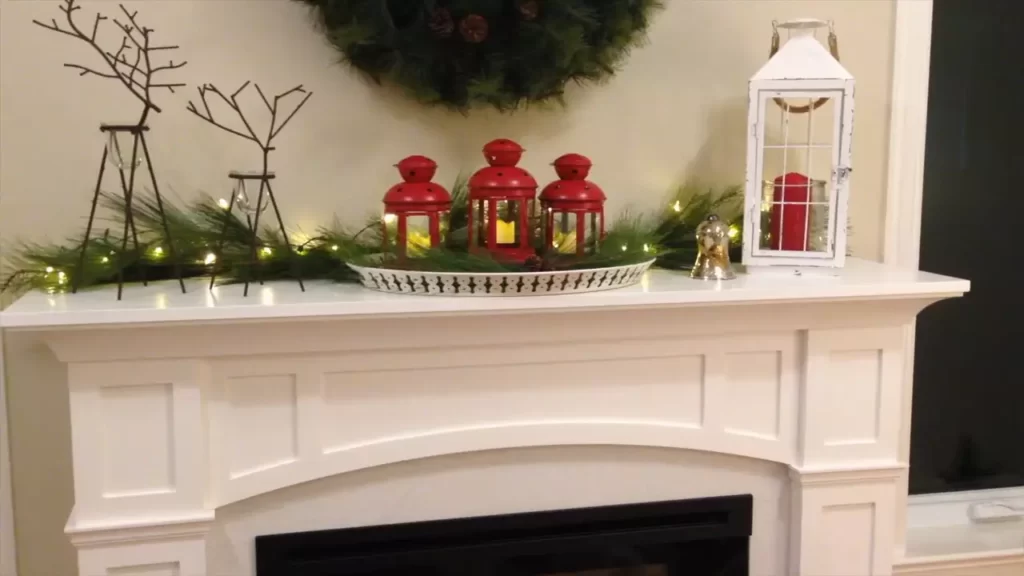
Factors to Consider When Selecting a Fireplace Mantel
Before diving into the various types of fireplace mantels, it is important to understand the key factors that will guide your decision-making process. By considering these factors, you can ensure that you choose a mantel that harmonizes with your overall interior design and meets your functional needs.
To help you make an informed choice, here are the factors you should consider:
- Style: The style of the mantel should complement the existing décor of your room. Whether you have a traditional, modern, or rustic interior, selecting a mantel that matches the overall theme will create a cohesive look.
- Size: mantels come in various sizes, so it is crucial to measure your fireplace opening accurately. Consider the proportions of your fireplace and the size of the surrounding wall to ensure the mantel fits harmoniously within the space.
- Material: From classic wood to sleek marble and contemporary metal, different materials offer distinct aesthetics. Consider the durability, maintenance requirements, and overall look of the material you prefer.
- Budget: Set a budget for your mantel project, taking into account the cost of the mantel itself, installation fees, and any additional accessories you may need.
Different Types of Fireplace Mantels and Their Features
Now that you have a clear understanding of the factors to consider, let’s explore the various types of fireplace mantels and the unique features they offer:
| Type | Features |
|---|---|
| Wood mantel | Made from various types of wood, these mantels exude warmth and charm. They can be stained or painted to match your desired look and offer versatility in terms of style and customization. Consider the wood type based on durability and natural resistance to heat and moisture. |
| Stone mantel | For a sophisticated and timeless look, stone mantels are an excellent choice. Whether it’s marble, granite, limestone, or even faux stone, these mantels create an elegant focal point. They are known for their durability and can withstand high temperatures. |
| Metal mantel | With their sleek and contemporary appearance, metal mantels bring a modern touch to any room. Typically constructed from materials such as steel, aluminum, or wrought iron, they are known for their durability and low maintenance requirements. Metal mantels can be powder-coated in various colors to match your interior design. |
| Brick or Tile mantel | A brick or tile mantel offers a rustic and rustic charm that can blend seamlessly with traditional or farmhouse-style interiors. These mantels can be constructed using a variety of brick or tile options, allowing for creativity and customization. They are durable and can endure the heat from your fireplace. |
Assessing Your Existing Fireplace and Determining the Appropriate Mantel Size and Style
Now that you have a grasp of the different mantel types available, it’s time to assess your existing fireplace to determine the appropriate size and style for your mantel Taking the following steps will ensure a seamless installation process:
- Measure the Fireplace: Measure the width, height, and depth of your fireplace opening to ensure the mantel will fit properly. The measurements will be essential when selecting a mantel size.
- Evaluate Surrounding Wall Space: Take a closer look at the wall space surrounding your fireplace. Consider the available vertical and horizontal space to determine the ideal size and proportions for your mantel
- Consider the Visual Impact: Visualize how the mantel will look in relation to your fireplace and the room as a whole. Take into account any architectural features, such as windows or built-in shelves, that may affect the overall aesthetic.
- Choose a Complementary Style: Consider the architectural style of your home and select a mantel style that seamlessly blends with the existing design. This will create a cohesive and harmonious look.
By carefully assessing these factors and evaluating your existing fireplace, you can confidently select the perfect fireplace mantel that not only enhances the beauty of your space but also reflects your personal style.
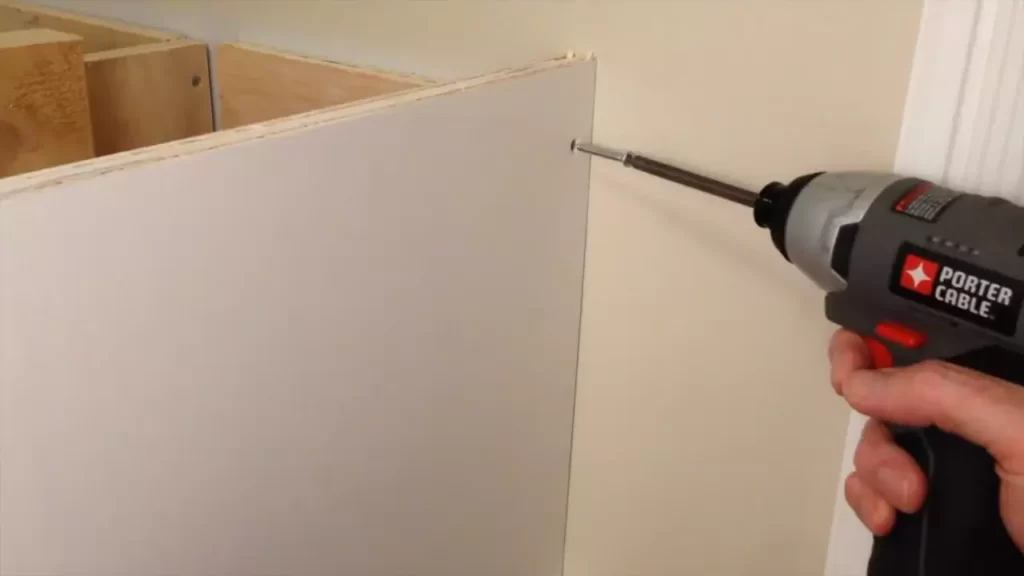
Gathering The Necessary Tools And Materials
Gathering the necessary tools and materials is the first step to successfully install a fireplace mantel. Before beginning the installation process, it’s important to ensure that you have all the essential tools and materials on hand. This will help make the installation smoother and more efficient. In this section, we will outline the essential tools needed for the installation process, the materials required for securing the mantel to the wall and fireplace, as well as additional accessories and decorative elements you may want to incorporate.
Essential tools needed for the installation process
Having the right tools is crucial to installing a fireplace manteleffectively. Here are the essential tools you will need:
- A tape measure to accurately measure the dimensions of your fireplace and wall.
- A level to ensure that the mantel is installed straight and evenly.
- A stud finder to locate the studs in the wall where you will be mounting the mantel.
- A drill with the appropriate drill bits for drilling pilot holes and securing the mantel.
- Screws or bolts (depending on the material of your mantel) to attach the mantel to the wall and fireplace.
- A screwdriver or wrench to tighten the screws or bolts.
- A pencil or marker to mark the location for drilling pilot holes.
- A saw or a miter saw to cut the mantel to the desired length, if needed.
- A vacuum cleaner or broom to clean up any debris after the installation.
Materials required for securing the Mantel to the wall and fireplace
Securing the mantel properly is essential for its stability and longevity. Here are the materials you will need:
- L-brackets or corbels to provide additional support for the mantel.
- An adhesive or construction adhesive to bond the mantel to the wall and fireplace.
- Concrete screws or masonry anchors, if you are installing the mantel on a brick or stone fireplace.
- Wood screws, if you are installing the mantel on a wooden wall or fireplace.
- Drywall anchors, if you are installing the mantel on a drywall.
- Wood filler or putty to fill any visible holes or gaps.
- Sanding paper or sandpaper to smooth out any rough edges.
- Paint or stain to finish the mantel, if desired.
Additional accessories and decorative elements you may want to incorporate
Adding accessories and decorative elements to your fireplace mantel can enhance its visual appeal. Here are some additional items you may want to consider:
- Candles or candle holders to create a cozy ambiance.
- Picture frames or artwork to display on the mantel.
- mantel clocks or decorative vases for added elegance.
- Books or bookends to add a touch of sophistication.
- Seasonal decorations, such as garlands or ornaments, change the look of the mantel throughout the year.
By gathering the necessary tools and materials, you will be well-prepared to install a fireplace mantel that not only adds warmth and beauty to your living space but also reflects your personal style and taste.
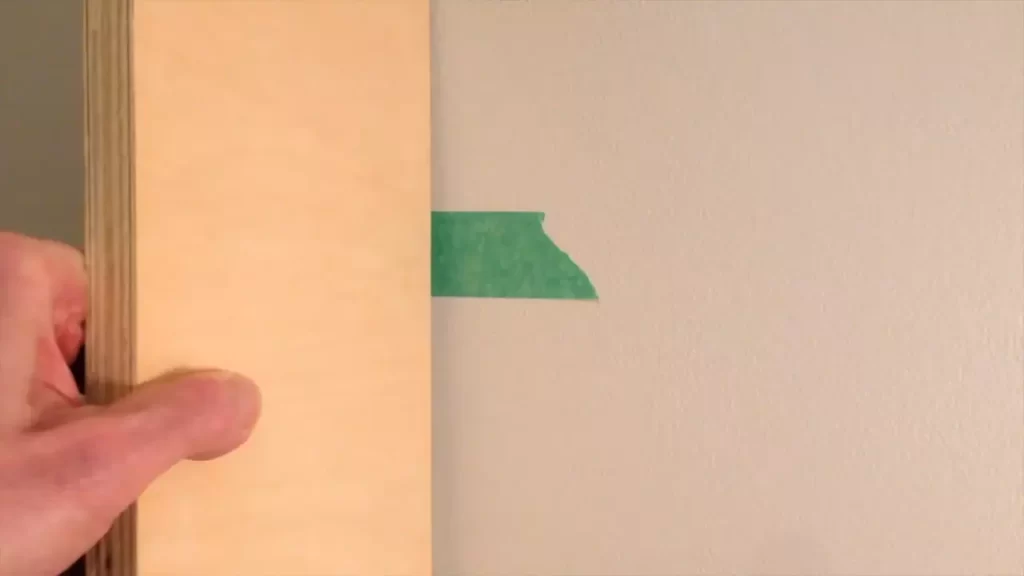
Preparing The Fireplace And Wall
Clearing the area around the fireplace for a safe and efficient installation
Before installing a fireplace mantel, it is crucial to clear the area around the fireplace to ensure a safe and efficient installation. Start by removing any furniture, decor, and accessories in the immediate vicinity of the fireplace. This will provide you with ample space to work and minimize the risk of accidental damage or injury during the installation process. Make sure to also remove any flammable materials, such as curtains or rugs, that could pose a fire hazard.
Measuring and marking the desired height and position for the Mantel
To achieve the desired aesthetic and functionality, it is essential to measure and mark the precise height and position of the fireplace mantel. Use a measuring tape to determine the ideal height at which you want the mantel to be installed. Consider the proportions of the fireplace and the overall room to find a position that complements the existing design. Once you have determined the measurements, mark them on the wall using a pencil or masking tape. This will serve as a guide during the installation process, ensuring accurate placement of the mantel.
Evaluating the condition of the wall and making necessary repairs or adjustments
Before installing the fireplace mantel, take a close look at the condition of the wall to identify any repairs or adjustments that may be required. Inspect the wall for cracks, holes, or any other damage that could affect the stability and appearance of the mantle. If any issues are found, be sure to address them before proceeding with the installation. Repair any cracks or holes using spackling compound or plaster, and sand the surface smooth once the repair is complete. By ensuring the wall is in good condition, you will create a solid foundation for the mantle that will enhance its longevity and overall appeal.
By properly preparing the fireplace and wall, you will set the stage for the successful installation of your new fireplace mantle. Clearing the area will create a safe and efficient workspace while measuring and marking the desired height and position will ensure a visually pleasing result. Additionally, evaluating and repairing any wall damage will guarantee the stability and longevity of the mantle. Keep these important steps in mind to achieve a beautiful and functional addition to your fireplace.
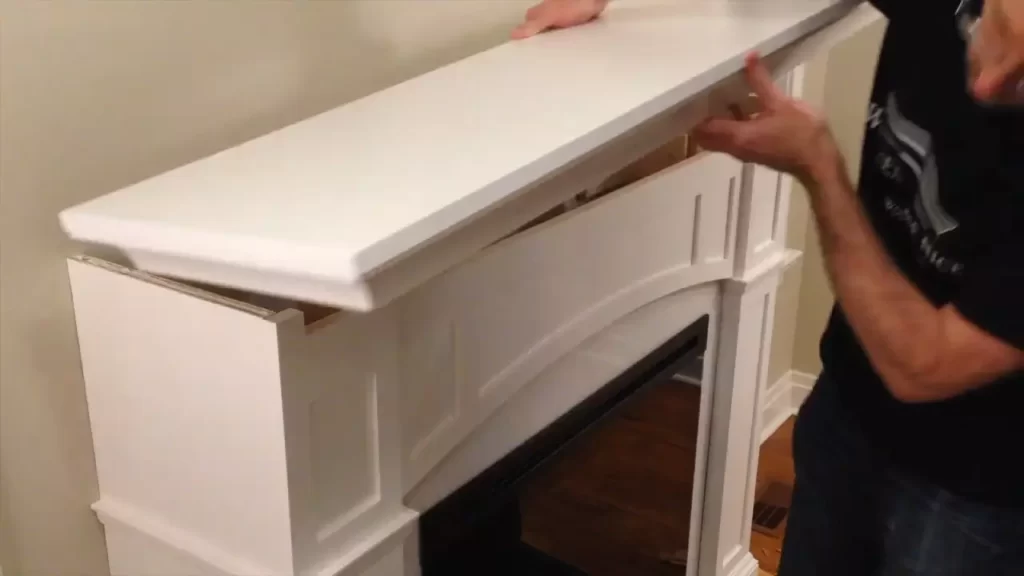
Installing The Fireplace Mantel
Installing a fireplace mantle is a great way to add charm and character to your living space. Whether you have a traditional wood-burning fireplace or a modern electric version, a properly installed mantle can enhance the overall appearance of the room. In this article, we will guide you through the process of mounting the mantle securely to the wall, positioning and leveling it correctly, and securing it to the fireplace for added stability and safety.
Step-by-step instructions for mounting the mantle securely to the wall
To ensure that your fireplace mantle is securely mounted to the wall, follow these step-by-step instructions:
- Start by measuring the height at which you want to install the mantle. Use a pencil to mark the desired height on the wall.
- Locate the studs in the wall using a stud finder. Mark the positions of the studs with a pencil.
- Position the mantle against the wall at the desired height and align it with the marked stud positions.
- Using a drill and screws, attach the mantle to the studs. Make sure to use screws that are long enough to secure the mantle firmly to the wall.
- Double-check the level of the mantle using a spirit level. Adjust the position if necessary.
- Once the mantle is level, tighten the screws to ensure a secure and stable installation.
Proper positioning and leveling techniques to ensure a balanced and aesthetically pleasing installation
Proper positioning and leveling are crucial to achieving a balanced and aesthetically pleasing fireplace mantle installation. Here are some techniques to help you achieve the desired result:
- Measure the width of your fireplace and choose a mantle that complements the size and style of the room. Consider the proportions and visual weight of the mantle in relation to the fireplace.
- Place the mantle at a height that is visually pleasing and proportionate to the overall room design. Generally, the mantle should be positioned around 4-6 feet above the floor.
- Use a spirit level to ensure that the mantle is level both horizontally and vertically. Adjust the position as needed to achieve a balanced look.
Securing the Mantel to the fireplace for added stability and safety
In addition to mounting the mantle to the wall, it is important to secure it to the fireplace for added stability and safety. Follow these steps to ensure a secure installation:
- Before securing the mantle, make sure the fireplace surface is clean and free of debris.
- Place construction adhesive on the back of the mantle, ensuring even distribution.
- Press the mantle firmly against the fireplace surface, aligning it with the previously installed wall-mounted mantle.
- Allow the adhesive to dry according to the manufacturer’s instructions.
- Once the adhesive is dry, use screws to further secure the mantle to the fireplace. This will provide extra stability and prevent any movement.
By following these step-by-step instructions and techniques for mounting, positioning, and securing your fireplace mantle, you can achieve a secure, balanced, and aesthetically pleasing installation. Not only will it enhance the visual appeal of your fireplace, but it will also create a warm and inviting atmosphere in your living space.
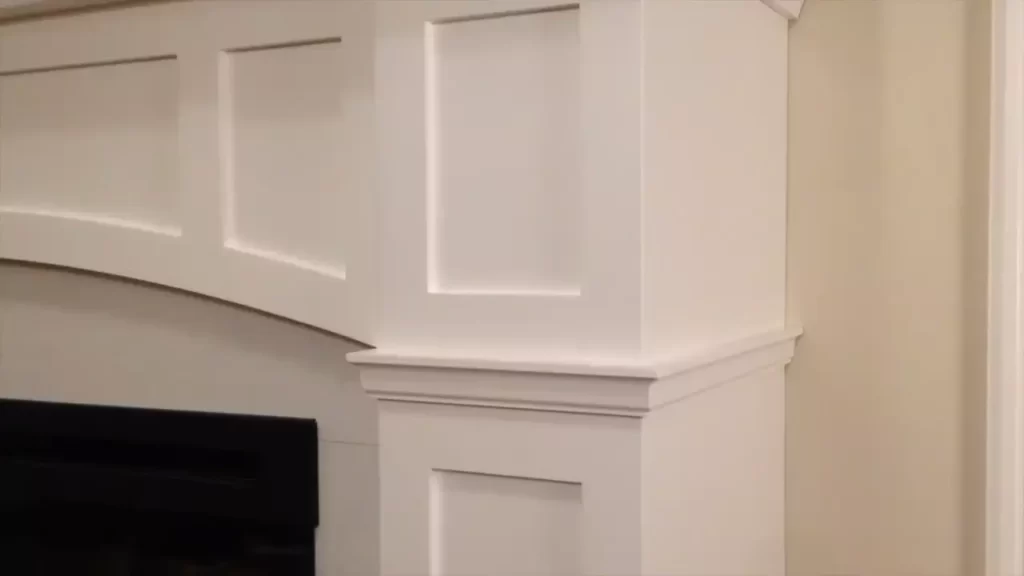
Finishing Touches And Decorative Options
Adding trim and molding to enhance the visual appeal of the fireplace Mantel
One of the most effective ways to elevate the look of your fireplace mantle is by adding trim and molding. This decorative element not only enhances the visual appeal but also adds a touch of sophistication and elegance to your fireplace area. By carefully selecting the right trim and molding options, you can create a unique and personalized look that complements the overall style of your home.
Consider choosing trim and molding that matches the architectural style of your home. For a traditional or classical aesthetic, intricate crown moldings or ornate trim can add a luxurious touch. If you prefer a more contemporary look, sleek and simple trim designs can create a clean and modern feel.
Besides selecting the right trim and molding, you should also pay attention to the color and finish. You can match the trim color with the fireplace mantle, or create a contrast by choosing a complementary shade. Bold colors like black or navy can make a statement, while neutral colors like white or beige can provide a more subtle and versatile look.
Painting or staining the Mantel to match your desired aesthetic
Another way to enhance the overall appeal of your fireplace mantle is by painting or staining it to match your desired aesthetic. The choice of color or stain can drastically change the look and feel of your mantle, allowing you to personalize it according to your style and preferences.
If you want to highlight the natural beauty of the wood, staining is a great option. You can choose from a wide range of stain colors that complement the existing decor of your space. From rich mahogany to warm oak, there are various options to suit every taste.
On the other hand, if you prefer a more vibrant and eye-catching look, painting the mantle can be a fantastic choice. Bold colors like red, blue, or even a glossy black can make your fireplace mantle stand out as a focal point in the room.
Regardless of whether you choose to stain or paint your mantle, remember to properly prepare the surface by cleaning, sanding, and priming it. This will ensure that the finish adheres well and lasts for years to come.
Incorporating decorative elements such as candles, artwork, or mirrors to personalize your Mantel’s design
To fully personalize the design of your fireplace mantle, consider incorporating decorative elements that reflect your style and personality. These decorations not only add visual interest but also create a cozy and inviting ambiance in the room.
Candles are a classic choice for mantle decor, offering a warm and romantic glow. You can display a group of pillar candles in various heights, or opt for a decorative candle holder that matches your overall theme.
Artwork is another fantastic option to add a personal touch. Hang a statement piece above the mantle or create a gallery wall with a collection of smaller artworks. Consider selecting pieces that complement the colors and style of your space, creating a harmonious and cohesive look.
Mirrors can also be an excellent addition to your fireplace mantle, as they not only create the illusion of more space but also reflect light and enhance brightness in the room. Select a mirror with an interesting frame design that adds texture and visual appeal.
Lastly, don’t be afraid to mix and match different decorative elements to create a unique and layered look. Experiment with different textures, materials, and heights to create visual interest and dimension on your mantle.
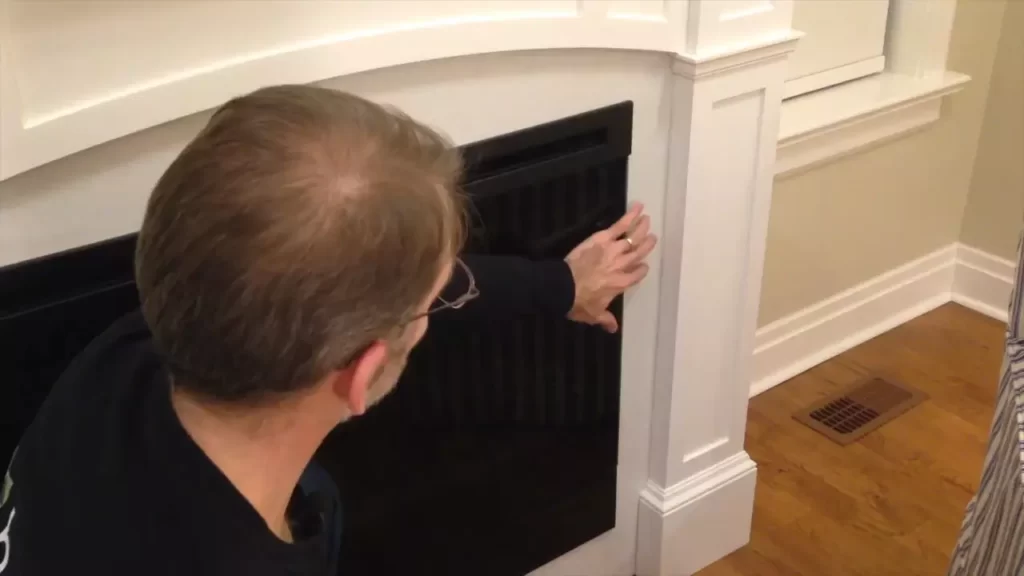
Maintenance And Care For Your Fireplace Mantel
Proper maintenance and care are essential to ensure the beauty and functionality of your fireplace mantle. By dedicating just a little time and effort, you can keep your mantle looking pristine and extend its lifespan. In this section, we will explore some essential tips for cleaning and maintaining your mantle’s appearance and functionality, as well as preventative measures to avoid damage or wear over time. We will also cover common issues that may arise and when it is necessary to seek professional assistance.
Tips for Cleaning and Maintaining the Mantel’s Appearance and Functionality
To keep your fireplace mantle looking as good as new, regular cleaning and maintenance are key. Follow these tips to maintain its appearance and ensure its functionality:
- Clean with a soft cloth: Dust and dirt can accumulate on your mantle over time. Gently wipe the surface with a soft cloth regularly to remove any debris and keep it looking clean.
- Use a mild cleaner: If there are stubborn stains or grime on your mantle, use a mild cleaner specifically designed for the material of your mantle. Avoid harsh chemicals that may damage the finish.
- Polish the surface: Depending on the material of your mantle, periodic polishing may be required to maintain its shine. Use a recommended polish for your mantle’s material and follow the instructions carefully.
- Inspect for damage: Regularly inspect the mantle for any signs of damage, such as cracks or loose parts. Address any issues promptly to prevent further deterioration.
- Maintain the fireplace: Keep the fireplace clean and free from debris to prevent soot or ash from accumulating on the mantle’s surface.
Preventative Measures to Avoid Damage or Wear Over Time
By taking preventative measures, you can avoid potential damage or wear on your fireplace mantle. Consider the following measures:
- Protect from heat: Ensure that your mantle is adequately shielded from the heat generated by the fireplace. Install a heat-resistant barrier or maintain a safe distance between the flames and the mantle.
- Avoid direct contact with liquids: Liquids can cause stains or damage the finish of your mantle. Be cautious and avoid any spills on the surface.
- Be mindful of decorations: If you enjoy decorating your mantle, be mindful of the weight and avoid placing heavy objects that may cause stress or damage.
- Control humidity levels: High humidity can lead to warping or other forms of damage. Use a dehumidifier if necessary to maintain a suitable humidity level in the room.
- Anchor securely: If your mantle is not installed securely, it may shift or become unstable over time. Ensure it is properly anchored to the wall or fireplace, following the manufacturer’s guidelines.
Troubleshooting Common Issues and Seeking Professional Assistance When Needed
Despite your best efforts, issues may still arise with your fireplace mantle. Here are a few common problems and the recommended actions:
| Issue | Action |
|---|---|
| Cracks or damage | Consult a professional to assess the severity and recommend repairs or replacement if necessary. |
| Loose parts | Tighten any loose screws or bolts. If the issue persists, seek professional assistance to avoid further damage. |
| Discoloration | Identify the cause of discoloration. If it is due to heat, consider installing a heat-resistant barrier. Professional help may be required for severe discoloration issues. |
Always prioritize safety and consult a professional if you are unsure about handling any mantle-related issues. Professional assistance can help ensure a timely and efficient resolution to any problems you may encounter.
With regular maintenance, proper care, and timely action, your fireplace mantle will continue to be a beautiful focal point in your living space for years to come.
Frequently Asked Questions Of How To Install A Fireplace Mantel
How Do You Hang A Mantel On Drywall?
To hang a mantel on drywall, follow these steps: 1. Locate the wall studs using a stud finder. 2. Mark the desired height for the mantel. 3. Attach a ledger board to the wall studs. 4. Install the mantel using screws or brackets secured into the ledger board.
5. Ensure the mantel is level and securely mounted to the wall.
How Far Should A Mantel Stick Out From The Fireplace?
A mantle should stick out from the fireplace by about 3 to 6 inches to ensure proper balance and aesthetics.
How Is A Mantel Attached To A Stone Fireplace?
The mantle of a stone fireplace is attached using brackets or corbels for support. These are secured to the wall and the mantle is mounted on top. This ensures stability and allows for the safe display of decorations or personal items.
How Do You Attach A Fireplace Mantel To Brick?
To attach a fireplace mantel to brick, follow these steps: 1. Measure and mark the desired placement on the brick surface. 2. Drill pilot holes into the brick using a masonry bit. 3. Place wall anchors into the holes and tighten them securely.
4. Attach a mounting bracket or cleat to the wall anchors. 5. Install the mantel onto the mounting bracket or cleat, ensuring it is level and secure.
Conclusion
To sum up, installing a fireplace mantel is a great way to enhance the aesthetic appeal and functionality of your living space. By following the step-by-step guide mentioned in this blog post, you can easily complete the installation process. Remember to choose a suitablemantel design that complements your home’s decor and make safety a top priority.
With a little bit of patience and effort, you can enjoy the warmth and charm of a beautifully installed fireplace mantel.
